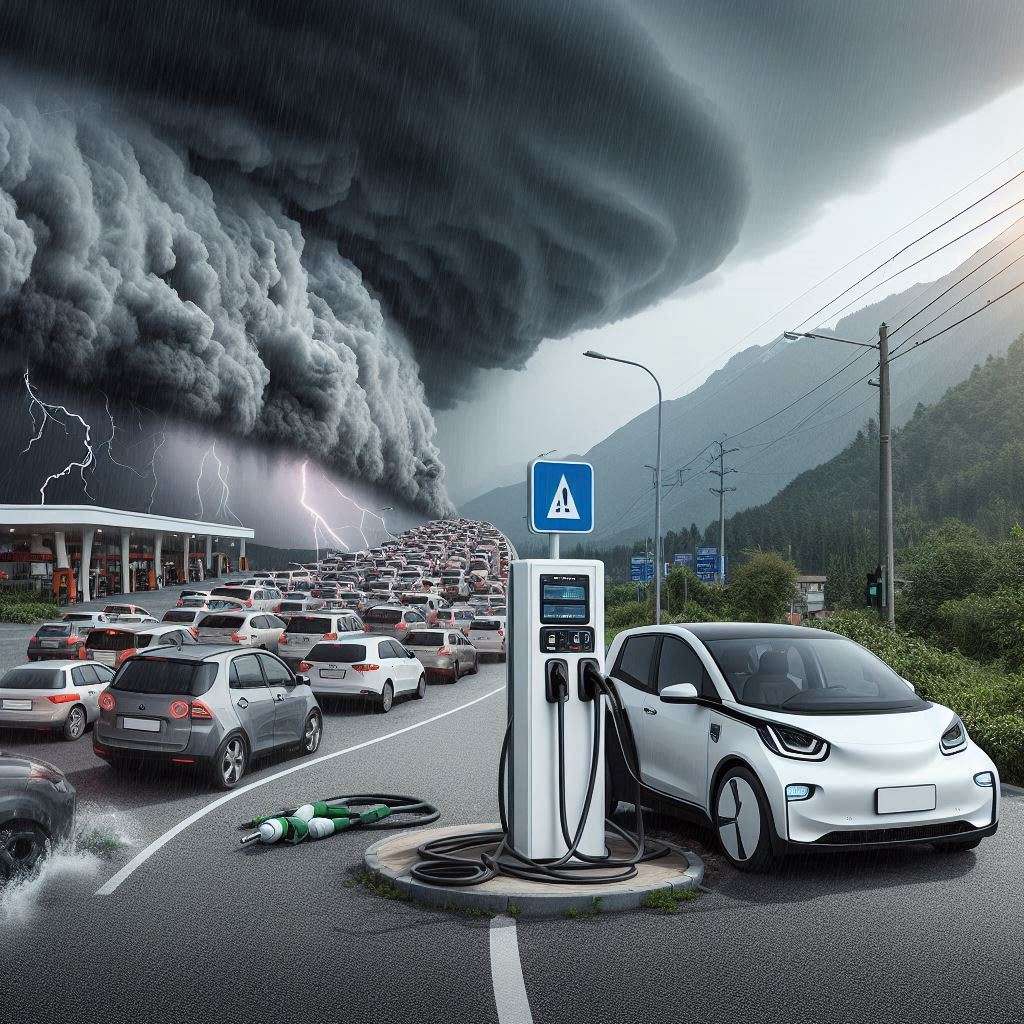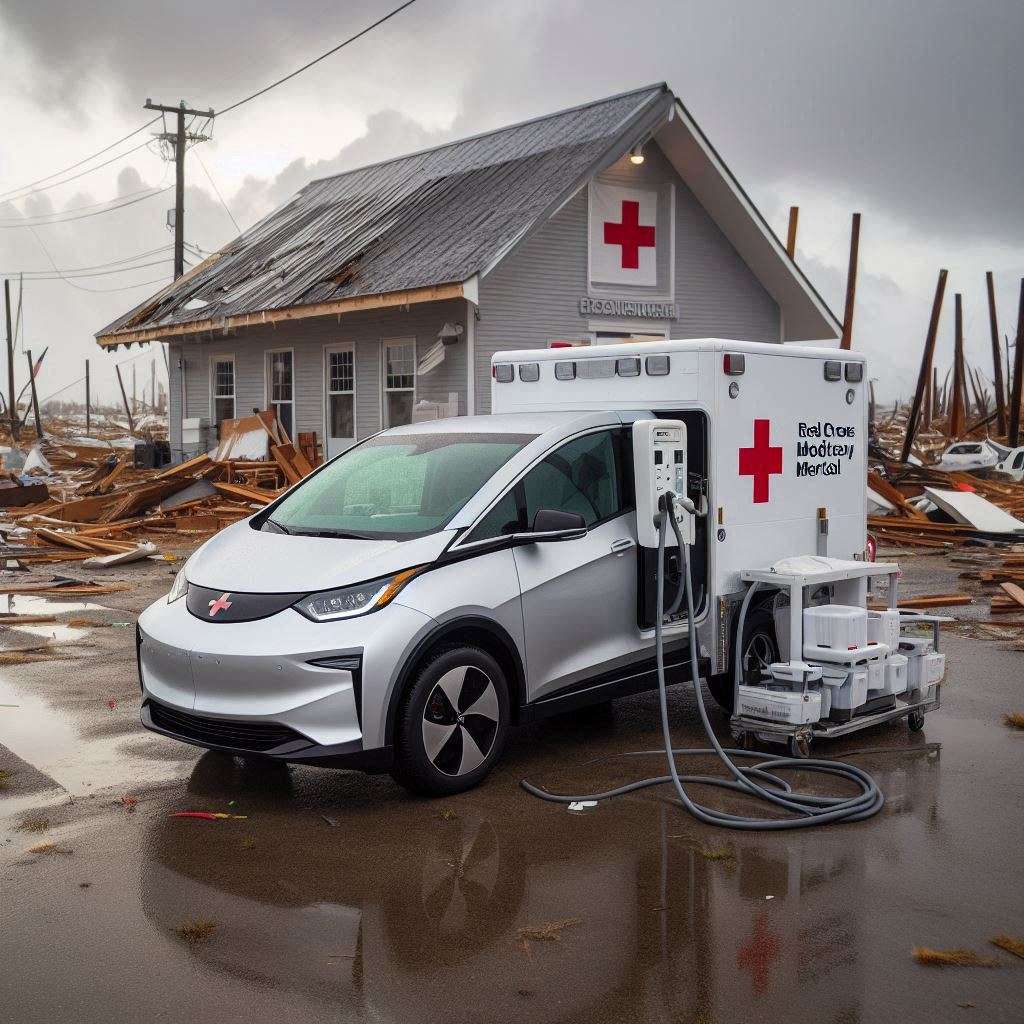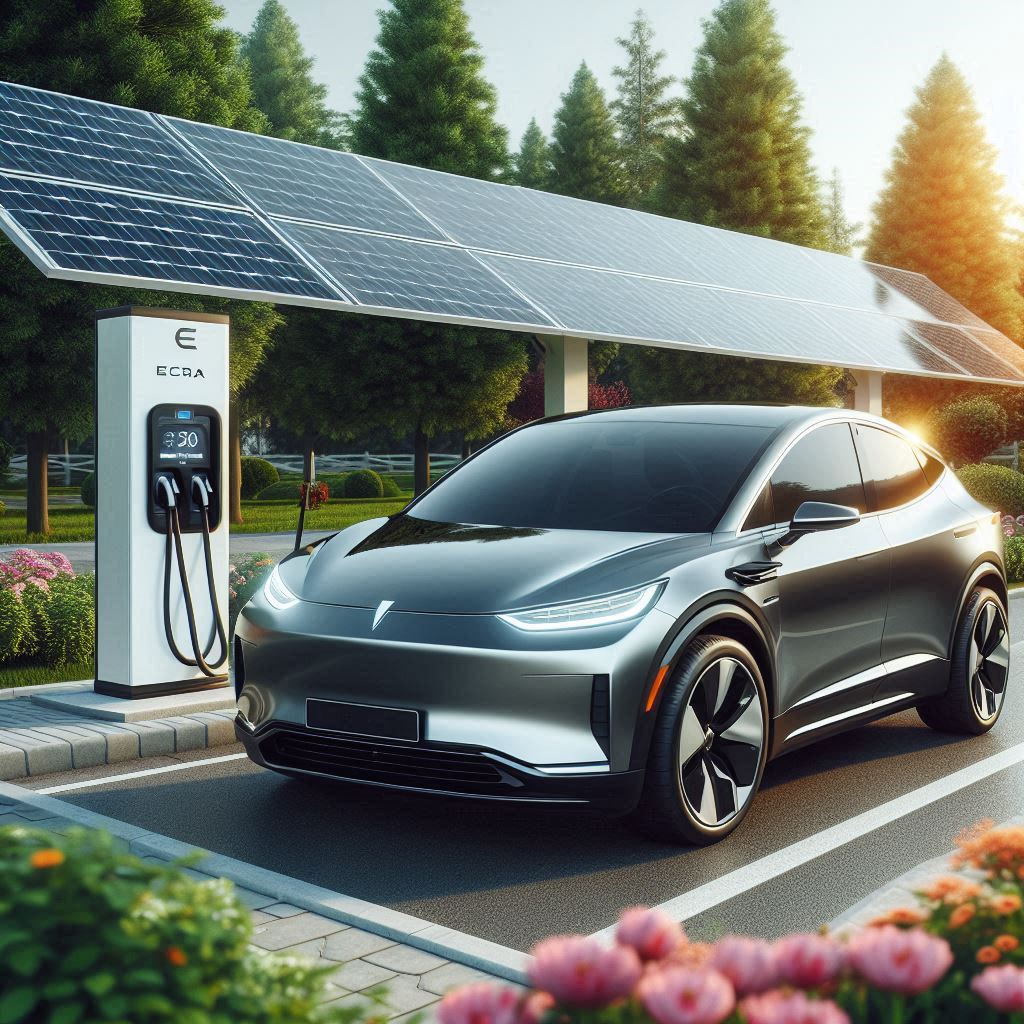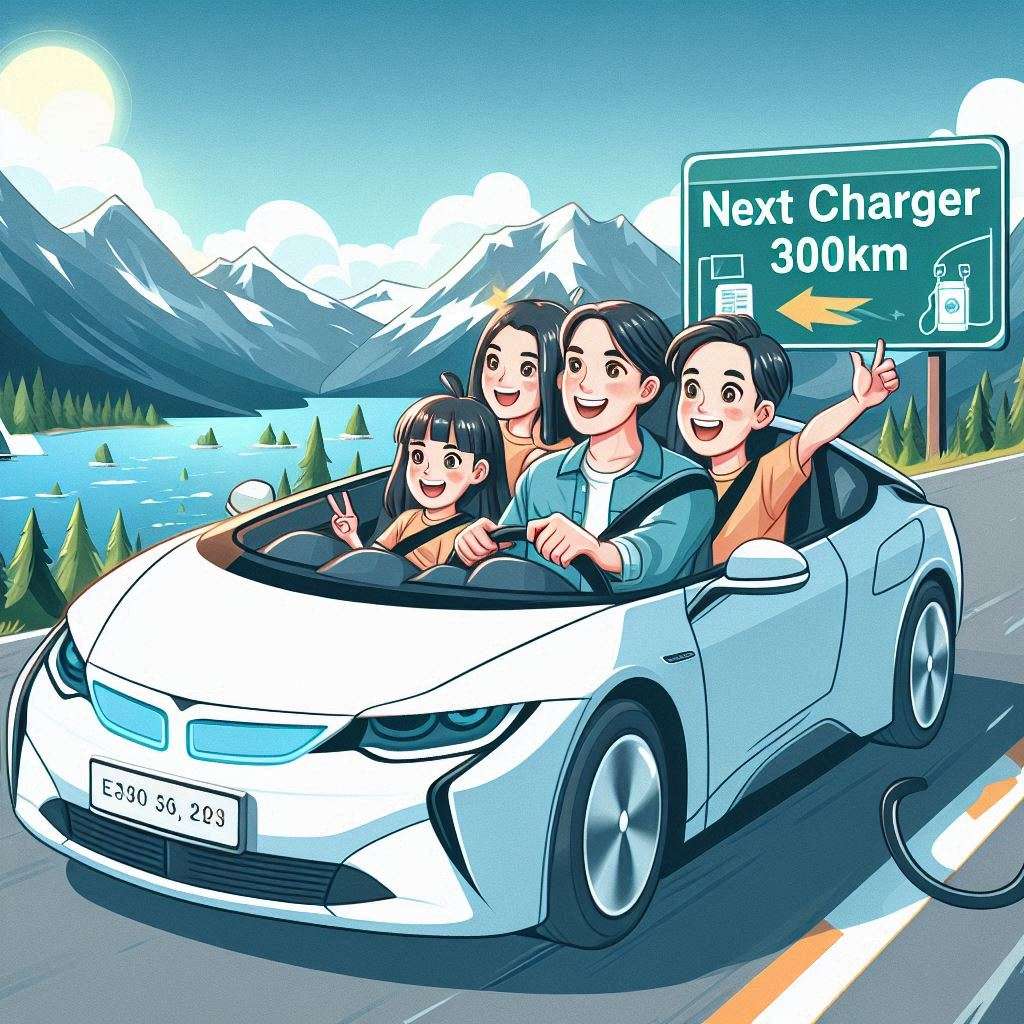EV Myth #14: EVs are useless in a Hurricane
In the face of a hurricane, the conventional wisdom has long held that electric vehicles are rendered useless, unable to provide the necessary transportation when it’s needed most. But is this notion rooted in fact or fiction?
The meme circulating in the wake of Hurricane Helene has lots of truth to it. Gas (or petrol/diesel) cars were certainly useful, but were electric cars really useless? Let’s find out.
The Truth about EVs in a Natural Disaster
As it turns out, EVs may be just as resilient or maybe even more resilient in the aftermath of a natural disaster compared to their petrol-powered counterparts. With every EV on the road, one less vehicle is vying for scarce fuel resources, and when the power grid is restored – likely faster than fuel supplies – EVs can seamlessly get back on the move. In fact, they can even serve as makeshift power sources for homes and businesses, making them a valuable asset in times of crisis.
The Myth Debunked
The notion that Electric Vehicles are useless in a hurricane or other natural disaster is a misconception that has been perpetuated by misinformation and a lack of understanding about the capabilities of EVs.
Petrol Vehicles Are Not the Only Option
Around the same time that petrol vehicles are struggling to access fuel, EVs can provide a reliable alternative, allowing people to evacuate or respond to emergencies without being hindered by fuel shortages.
I’m certainly not suggesting petrol should be abandoned at this point, but it might be hard to get. I have an old petrol generator that I inherited from my father (he used to use it on remote job sites – he was an electrician) and in the event I’m faced with a natural disaster, I will make sure I have a couple of full fuel caddies for it. Anyone with a fossil fuel car should certainly get themselves a full tank.
Electric Cars Have Their Own Advantages
Opting for an EV means choosing a vehicle that can not only navigate through a disaster but also contribute to the recovery efforts. With a full charge, you can travel 300+ kilometers and if you’re evacuating ahead of a storm, it’s likely the charging stations will still be working. Indeed there have been reports coming out of Florida in the last few days of EV drivers feeling a little guilty as they pass queues at gas stations, only to pull in to a charging station with no queue at all.
Today’s modern weather forecasting might not get everything right, but rarely do they fail to give us warning of an impending disaster. We almost immediately start finding long queues at petrol stations and in recent events in the USA many gas stations simply ran out of fuel. The electricity is usually available right up to the disaster striking, giving us plenty of time to get a full charge in to our battery. If you have solar panels, there’s a good chance you’ll continue to have electricty throughout the disaster.
It’s worth noting that EVs can serve as a power source, providing electricity to homes or businesses when the grid is down. This feature, known as “vehicle-to-grid” technology, can be a game-changer in the aftermath of a hurricane. With every EV being one less vehicle trying to get fuel, the strain on fuel supplies is reduced, and the possibility of electricity being restored quickly increases, possibly even faster than fuel supplies. This is especially significant since petrol stations rely on electricity to pump fuel into vehicles, making EVs a very useful component of disaster response and recovery.
Real World Examples from recent USA Hurricane Events
Here’s a really interesting article about how a vet in a hurricane affected area was able to contiinue running her surgery running despite having no electricity from the grid. Her Vet Clinic Went Down In Hurricane Helene. Two EVs Powered It Back Up (msn.com)
While I’m not providing essential services like a vet clinic, I’ve personally powered up my house during day long power outages using my Kia EV6 as a power source. Using only 3% of my battery for the day (10+ hours), I estimate I can power my house for at least a week and still have enough electricity to drive around the local area. Now that I have solar, this would mean I have an almost infinite power supply for my house, as long as my rooftop system isn’t damaged. I probably won’t need that petrol generator I inherited. In this case, one of my neighbours can likely take my petrol supply.
Emergency Services are increasingly utilising EVs in their fleets. Police forces seem to be more advanced in their adoption plans, although fire brigades and ambulance services are catching on. Even the army is getting onboard with the idea trialling EVs for protected mobility.
The Practical Benefits
Some of the most significant advantages of electric vehicles (EVs) during a hurricane or natural disaster become apparent when considering the practicalities of disaster response and recovery.
One Less Vehicle in the Fuel Queue
On the heels of a hurricane, and often in the lead-up, gas stations often struggle to keep up with demand, leading to long lines and frustrated drivers. Every EV on the road is one less vehicle trying to get fuel, reducing congestion and allowing emergency responders to access the fuel they need more quickly.
Faster Restoration of Electricity vs. Fuel Supplies
Supplies of fuel may take longer to restore than electricity, as fuel pumps rely on electricity to operate. This means that even if fuel is available, it may not be accessible without power. Fuel trucks will be given priority, but will still take time to get through. Local linesmen and electricity crews will restore electricity quickly, so even if your home hasn’t recovered, chances are there will be electricity somewhere nearby you can recharge your EV to keep the house powered up.
A significant advantage of EVs in this scenario is that they can continue to operate even when fuel supplies are disrupted. With electricity potentially restored more quickly than fuel supplies, EVs can provide a reliable means of transportation, allowing people to get where they need to go and aid responders to reach affected areas. According to the US Energy Information Administration, in 2020, the average time to restore power after a hurricane was around 3-5 days, while fuel supply chains can take longer to recover. This difference in restoration time could be a critical factor in disaster response and recovery efforts.
The Hidden Potential
All too often, the narrative surrounding Electric Vehicles during natural disasters like hurricanes is one of limitation and inconvenience. However, this narrow perspective overlooks the unique advantages EVs bring to the table, particularly in the aftermath of a disaster.
I wrote an article recently about emergency services using EVs
The Big Picture
Not only do electric vehicles hold their own during hurricanes and other natural disasters, but they also offer unique advantages that can aid in disaster response and recovery. By debunking the myth that EVs are useless in such situations, it becomes clear that they can play a vital role in keeping communities moving and connected. A mixed fleet of traditional fossil fuel vehicles and EVs may prove optimum in disaster recovery scenarios over the coming decade or two.
The Role of EVs in Disaster Response
Before the storm hits, EVs can help evacuate people and supplies, reducing the risk of accidents and congestion caused by traditional fuel-powered vehicles at fuel stations. With their quiet operation and zero-emission capabilities, EVs can also provide a safer and more environmentally friendly way to navigate through disaster zones. Without loud engines, it may be easier to hear survivors crying out for help if trapped under debris.
A More Resilient Infrastructure
Disaster scenarios often highlight the weaknesses in our infrastructure, but EVs can help strengthen it. By integrating EVs into emergency response plans, cities can create a more resilient and adaptable infrastructure that can withstand the challenges posed by natural disasters.
Indeed, with the ability to power homes and businesses, EVs can serve as mobile energy storage units, providing a reliable source of electricity when the grid is down. This feature becomes particularly important in the aftermath of a hurricane, when electricity may be scarce. By leveraging EVs in this way, communities can reduce their reliance on diesel generators and other polluting sources of power, creating a cleaner and healthier environment for those affected by the disaster.
Addressing Concerns
Range Anxiety in Emergency Situations
Alleviating concerns about range anxiety, EV owners can take comfort in knowing that they can charge their vehicles at home, avoiding the chaos and congestion at gas stations. With a full charge, EVs can travel hundreds of miles, more than enough to reach safety or evacuate to a nearby city.
Charging Infrastructure in Disaster-Prone Areas
On the topic of charging infrastructure, many cities in hurricane-prone areas have invested heavily in building resilient and storm-resistant charging stations. In fact, according to a study, over 70% of charging stations in Florida are designed to withstand Category 4 hurricanes.
Also, it’s worth noting that EV charging infrastructure is often built with backup power sources, such as solar panels or generators, ensuring that charging stations remain operational even when the grid is down. This means that EV owners can still charge their vehicles, even in the aftermath of a hurricane.
Fire Risk after Immersion: A genuine risk
As battery and EV technology improves, this risk will undoubtedly diminish. Further guidance for EV drivers will become available as more information comes to hand. Research by EV Firesafe, indicates that 34 vehicles around the world are known to have caught fire after immersion, which is less than 1 in 100 immersed vehicles. (4 of those 34 are suspected and unconfirmed).
Final Words
With all this in mind, it’s clear that the notion that EVs are useless in a hurricane or other natural disaster is simply a myth. In reality, electric cars have several advantages in such situations. They alleviate the pressure on fueling stations, as they don’t require fuel to operate. Moreover, electricity is often restored more quickly than fuel supplies, which rely on electricity to function. And, as an added benefit, EVs can even serve as a power source for homes and businesses, providing a lifeline during times of crisis. They, in fact, prove to be a valuable asset in the face of disaster. They definitely have a place right alongside their fossil-fuel counterparts in providing effective disaster relief.






